6. The reproductive system of farm animals
By the end of this session you will be able to:
- Describe the male and female reproductive anatomy of the cow and sheep
- Explain the role of the key organs in reproduction
- Name and explain the role that the reproductive hormones carry out
- State the sequence in the reproductive cycle of farm animals.
Introduction
In the bovine species two systems are involved in the control reproduction process:
- The nervous system
- The endocrine system
The Nervous System
All animals receive stimuli from the environment and they are registered by the senses and are transmitted to the brain, there they are decoded and actions are put into motion. In the bovine, the eyes and the nose play an important part in reproduction. The eyes sense light and the sight of other animals, whilst the nose picks up the sex odours.
The brain and spinal cord receive information from the environment of the animal and convey this information – i.e. relevant for reproduction – to the gonads through the Hypothalamo-Pitutiary-Gonadal axis.
The Hypothalamo-Pitutiary-Gonadal axis.
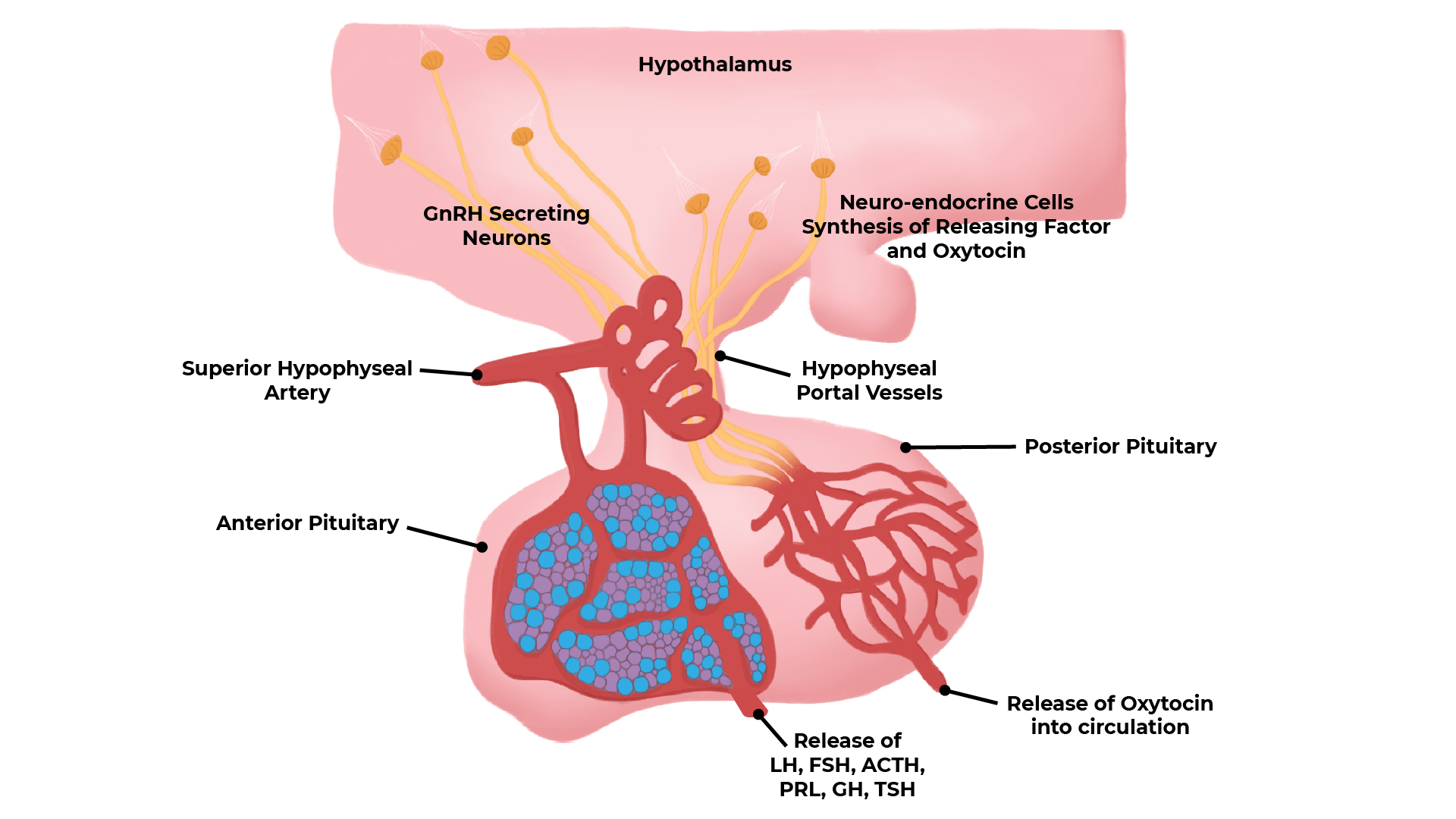
Hormonal system
The hormonal system is a regulatory system that sends information by means of chemical messages. This is the system that links the nervous system to several key reproductive organs.
A hormone can be described as a chemical substance that is produced either in a gland or tissue in the body, which causes a specific reaction to take place in tissues or organs that are sensitive to that hormone.
How does the hormonal system work?
The hormonal system works in two ways:
- Autocrine way
- Paracrine way
Autocrine: this is where the producing organ is also the target organ.
Paracrine: this is where the producing organ affects cells or organs.
The cow’s reproductive organs
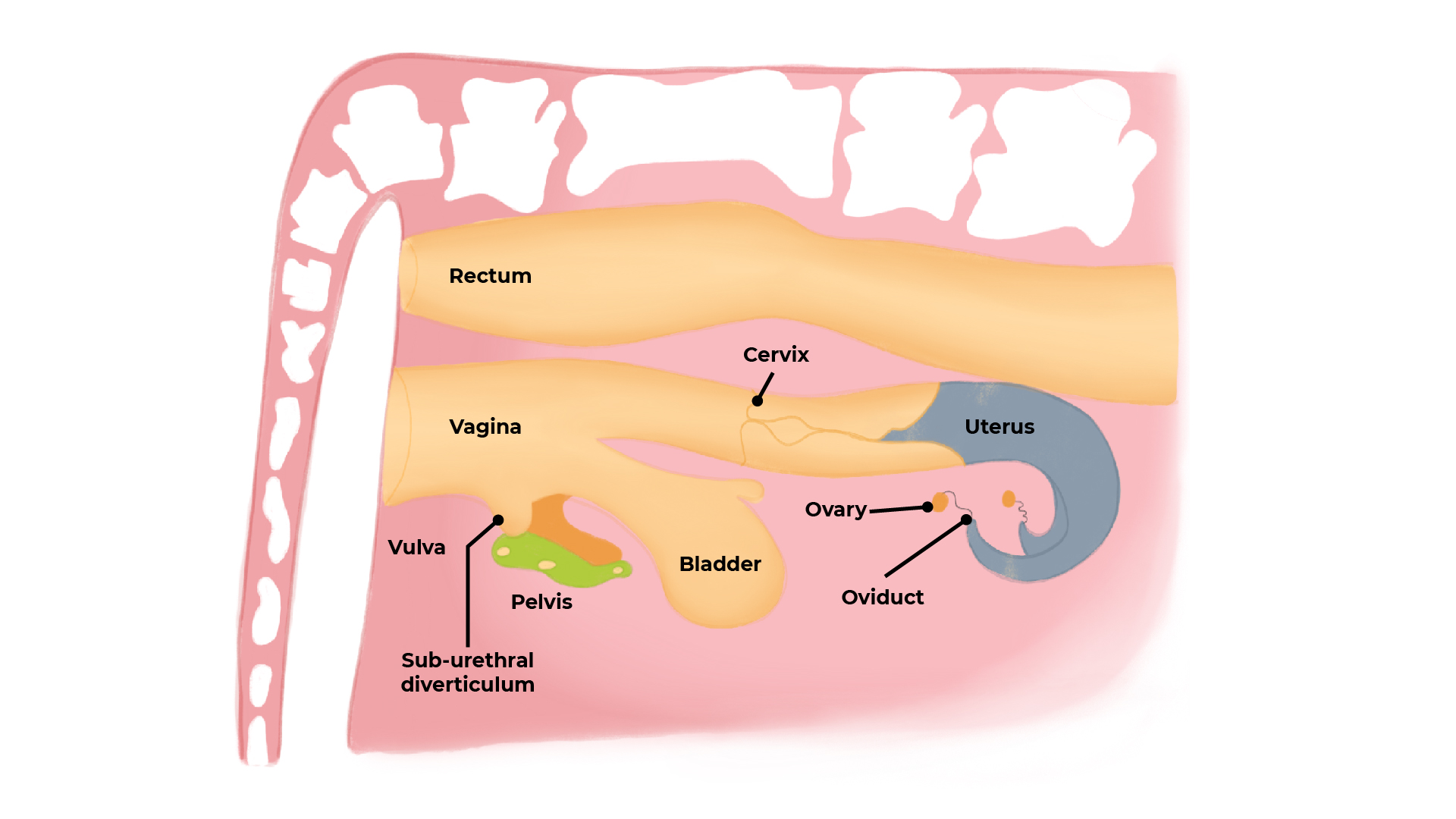
The role of the reproductive organs in a female:
Vulva: This is the only organ that is in contact with the surrounding environment.
Cervix: This is where the sperm and ova meet to become fertilized.
Uterus: This is a muscular organ connected to two oviducts. This is the location where the growing foetus is supported until parturition. Also this where the egg is received and forms an embryo.
Uterine horn: The uterine horns are at the point where the uterus and the oviduct meet.
Ovary: This is where the formulation of the eggs, Oogenesis takes place, this is the ovaries’ main function. When the follicle of the ovary wall ruptures, the ova escapes and then enters the oviduct and then onto the uterus.
The bull’s reproductive organs
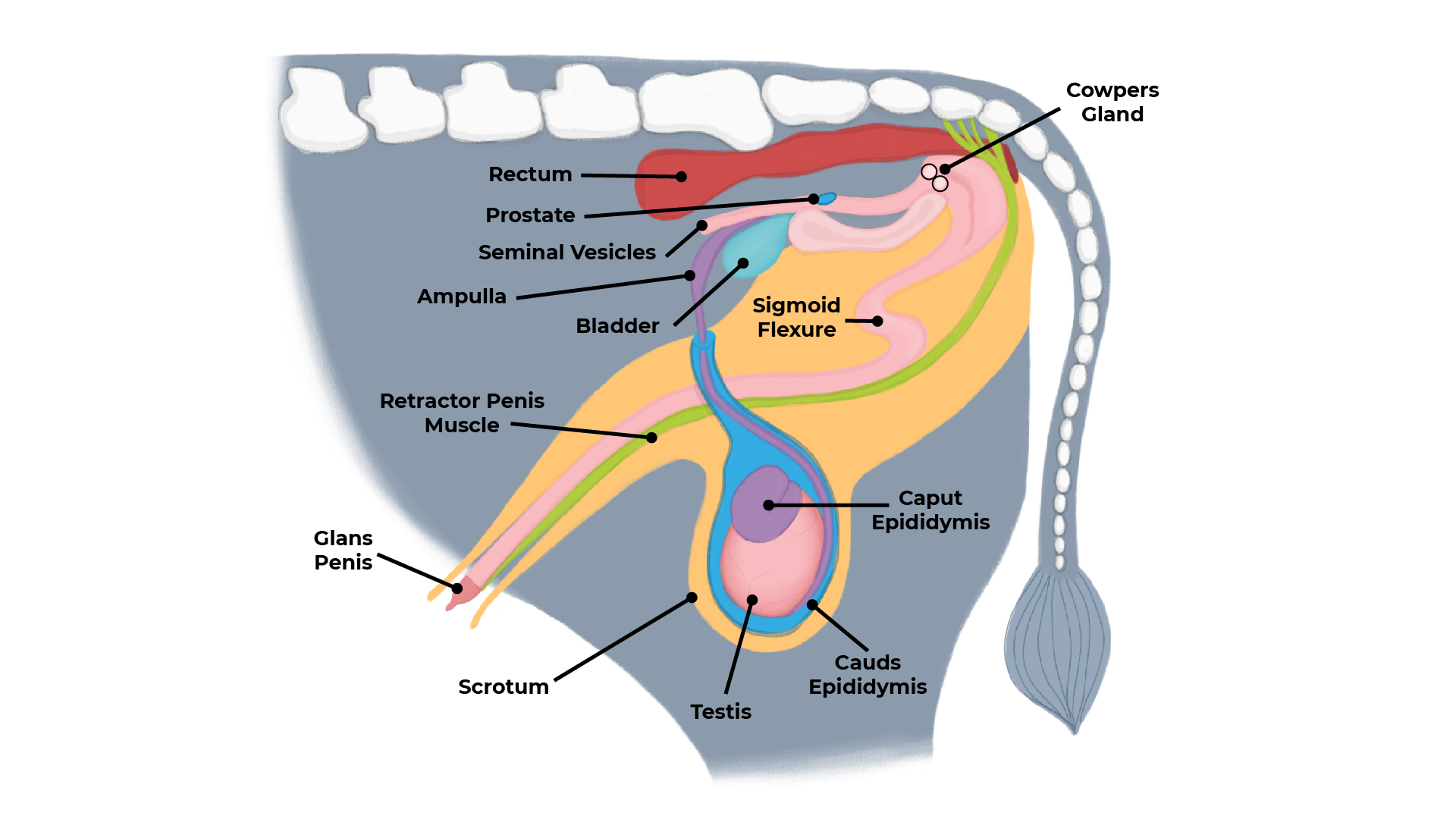
Reproductive system of male and female sheep
Female

Reproductive system of male and female sheep
Male
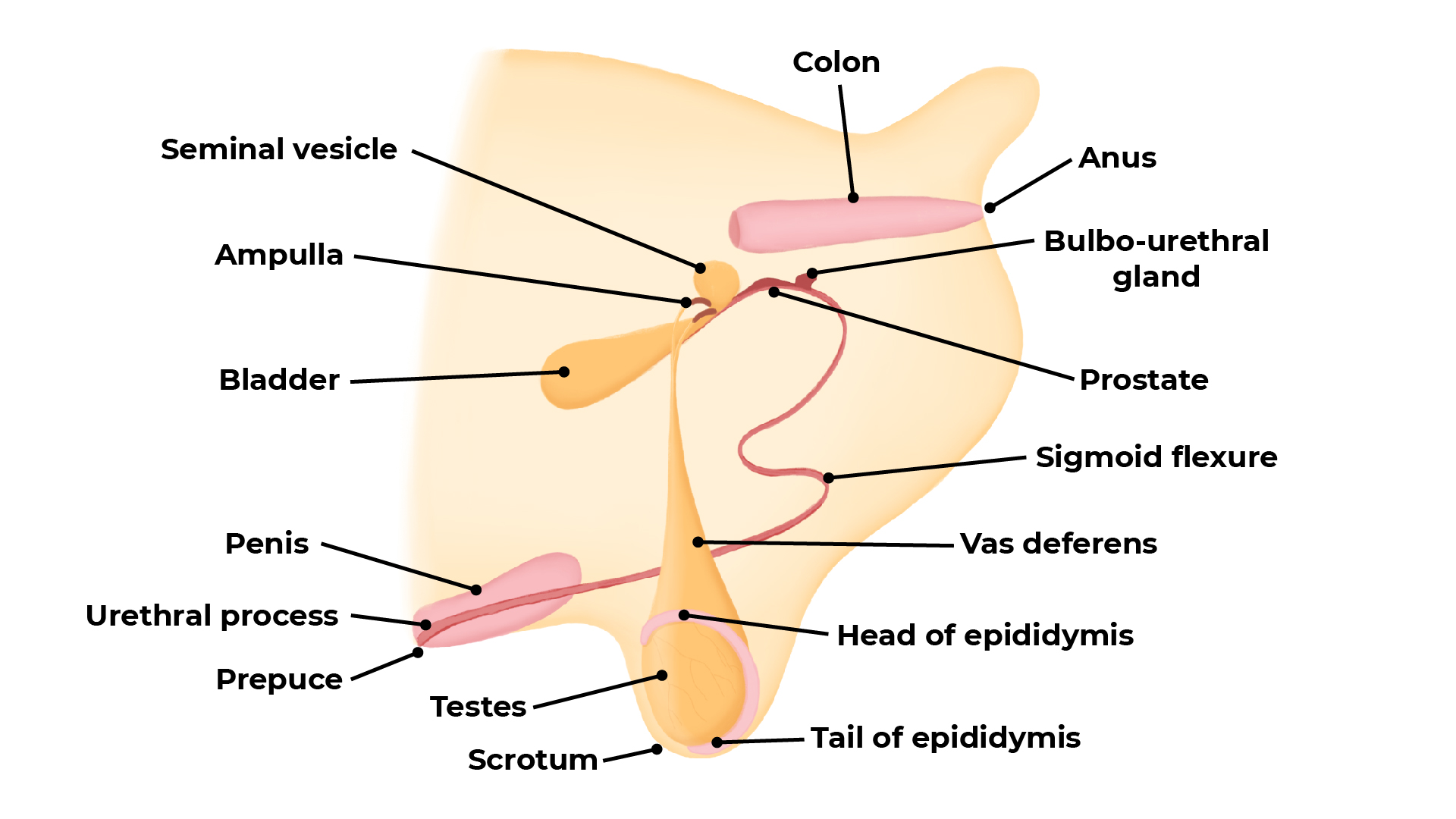
Reproductive characteristics of ewes
| Characteristics | Average | Range |
| Age at puberty | 5 to 12 months | |
| Length of oestrous cycle, days | 17 | 13 - 19 |
| Duration of oestrus, hours | 30 | 18-48 |
| Timing of ovulation | 20- 30 hours | after start of oestrus |
| Gestation, days | 146-147 | 138 - 149 |
The role of the reproductive organs in a male:
Testicles: These are located outside of the body in the scrotum. This is because they cannot cope under the heat of the body. Their main function is to produce two hormones, testosterone and spermatozoa.
Epididymis: This has an elongate flat structure. It is attached to one side of the testicles. It has 3 regions, the head, body and tail. Its main role is to transport testosterone from the testicles to the vas deferens.
Vas deferens: These emerge from the tail of the epididymis as a straight tube into the body cavity.
Urethra: The 2 vas deferens from each testicle unite into a single tube. The urethra channel that passes through the penis is the path of the sperm and the urine.
Accessory glands: These 2 are found in the region where the vas deferens meet to become the urethra. Liquid from these glands make up most of the sperm.
Penis: This is an anatomical structure which stays inside the sheath except at times of service.
Testes – Testosterone
Testosterone is essential for sperm production and is responsible for secondary sexual characteristics – strong shoulders, neck and head.
The hypothalamus releases gonadotrophin-releasing hormone (GnRH), which causes the pituitary gland to release follicle-stimulating hormone (FSH) and luteinising hormone (LH). LH causes the Leydig cells in the testes to produce testosterone. High levels of testosterone prevent the hypothalamus from producing more GnRH and prevent the pituitary from producing FSH and LH , stopping testosterone production by the testes by a negative feedback loop.

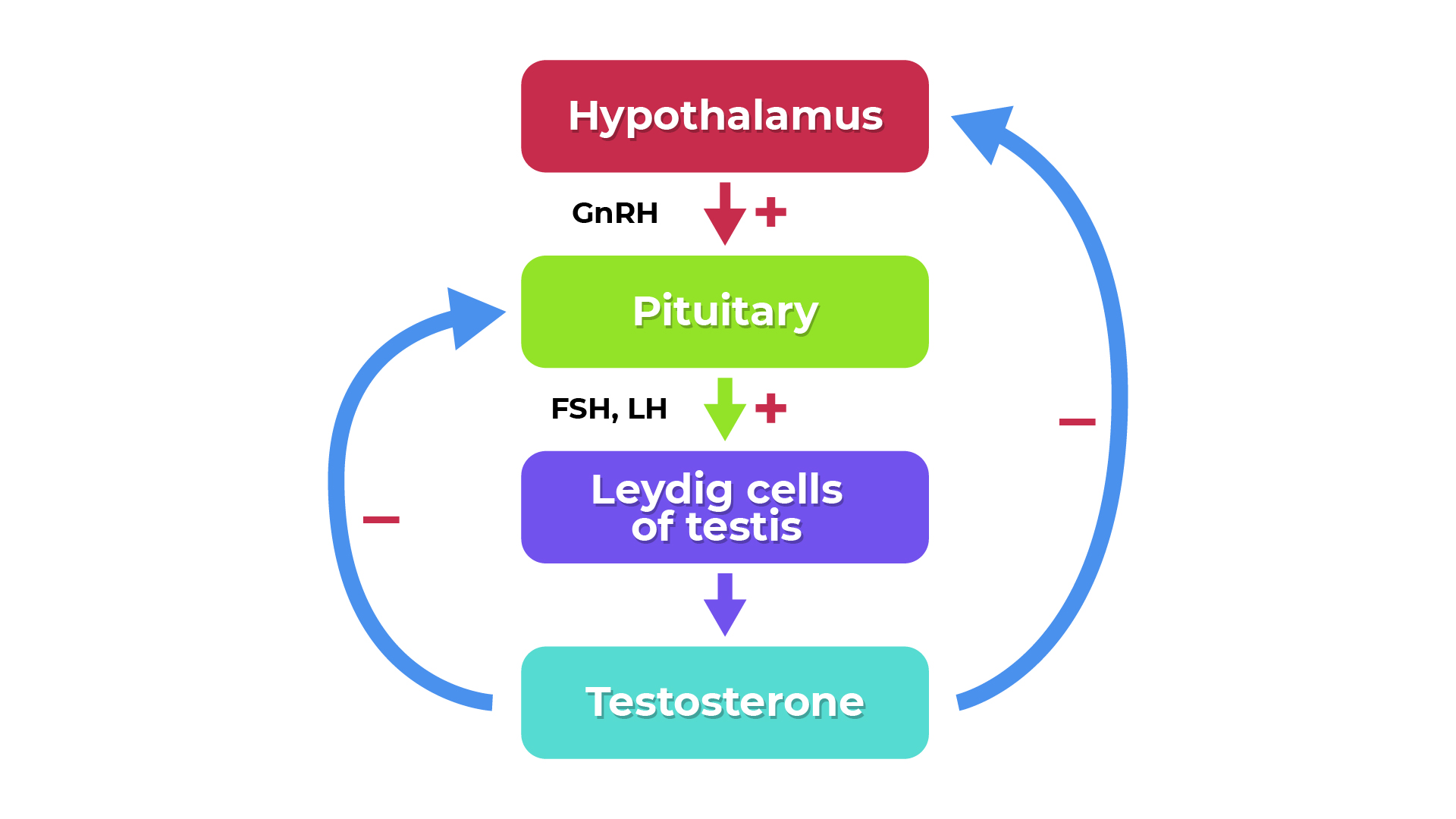
Testosterone
This is produced in the testicles and can also be secreted from the adrenal glands. This may influence the bull or ram’s behaviour, but this will mainly only affect the cows / ewes that are on heat.
Progesterone
This is a hormone that is involved in pregnancy and the menstrual cycle. If a cow becomes pregnant, the progesterone and CL stay at high levels to help maintain pregnancy, by preparing the lining of the uterus for the embryo.
If the cows are not pregnant, CL levels decrease and less progesterone is produced on day 18 so that the cow is able to return to oestrus on day 21.
Oestrogen
This is only produced in the female cycle, it is found in the ovary. Its main function are that it induces oestrus behaviour and stimulates preovulatory GnRH release.
FSH
This is the follicle-stimulating hormone. It is secreted from the pituitary gland. In females it stimulates the growth of the follicles on the ovary.
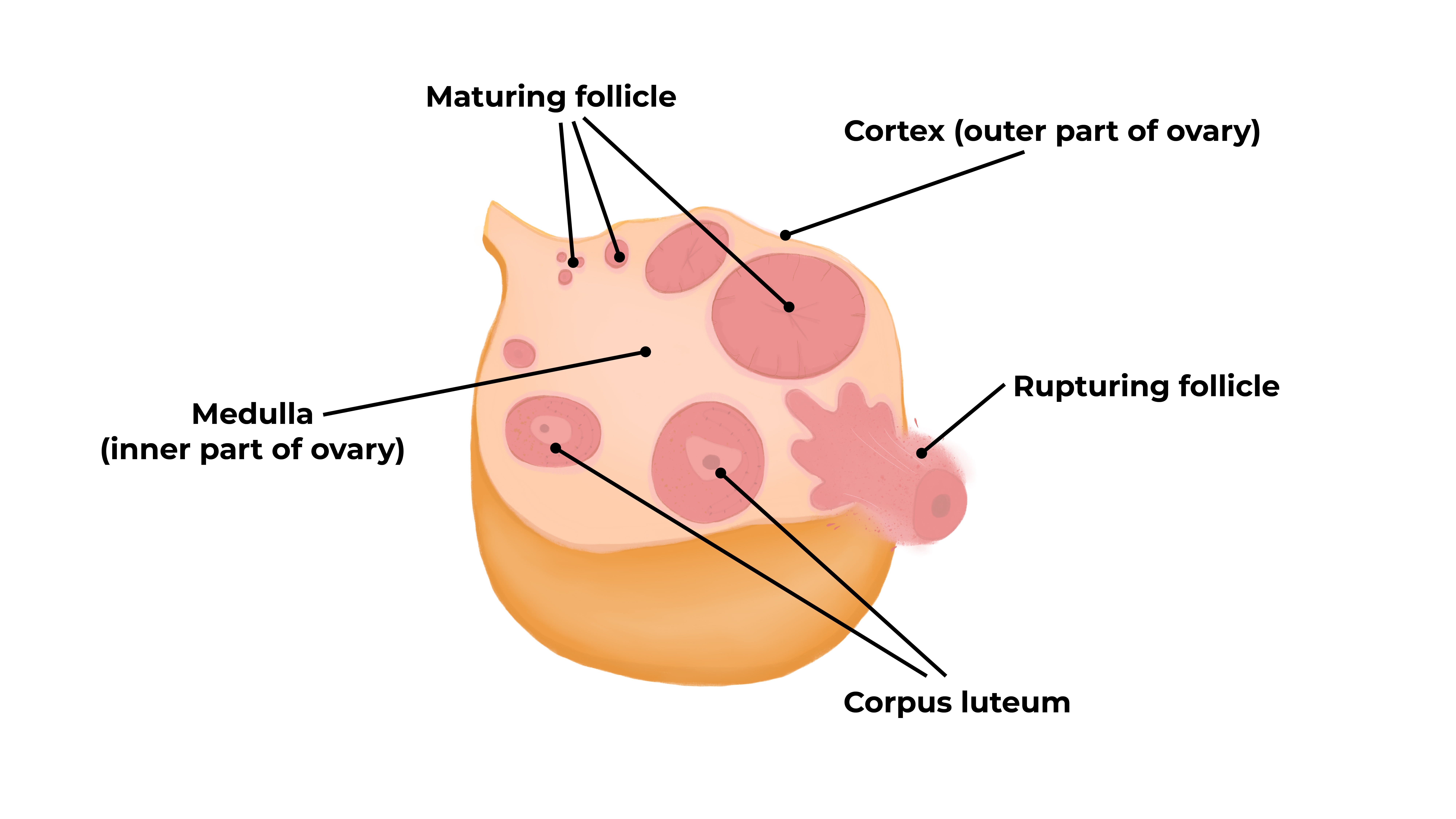
FSH
In the male cycle it acts directly on the seminiferous tubules of the testis. This initiates sperm production, spermatogenesis.
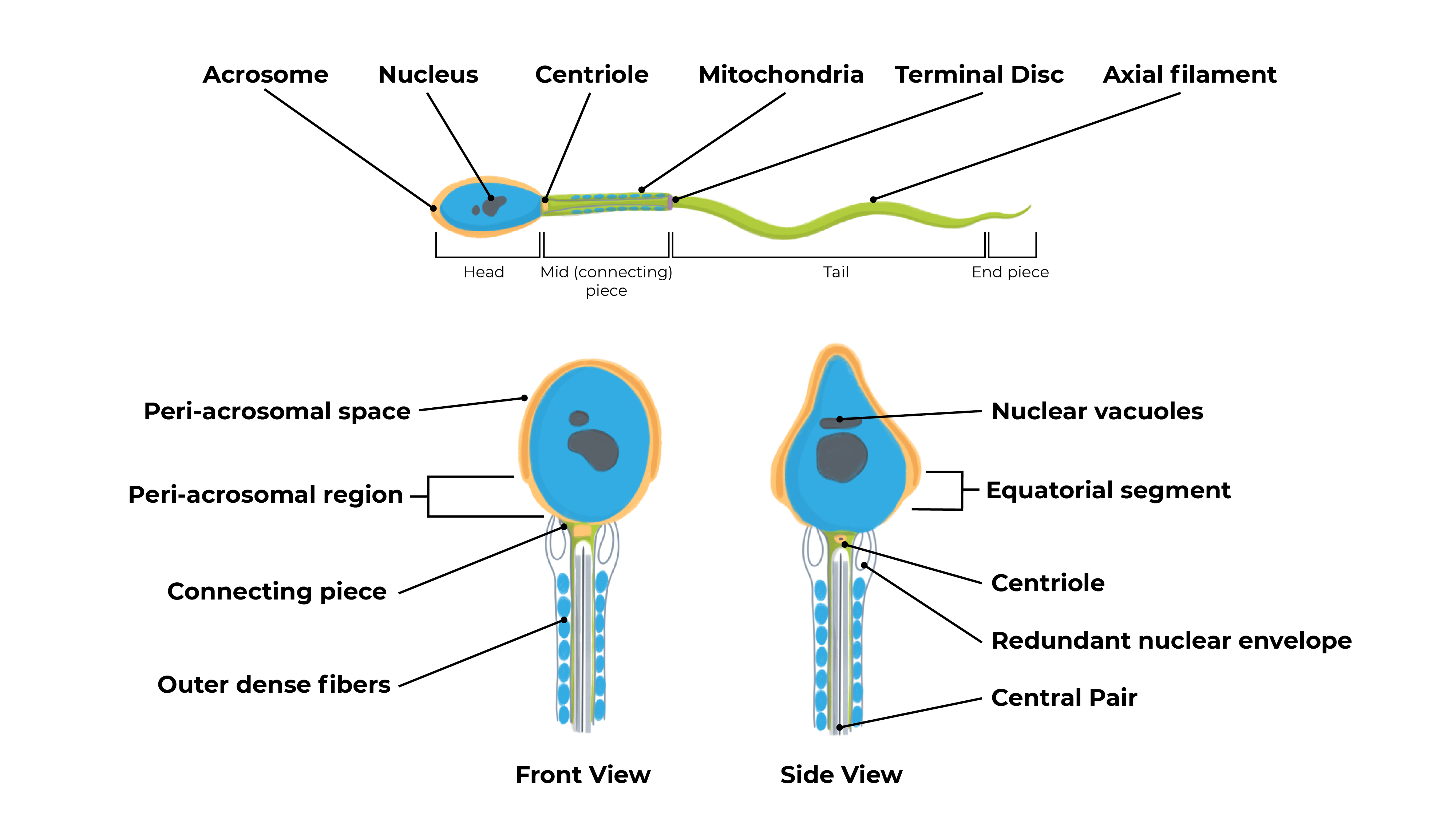
LH
LH, the luteinizing hormone, is produced in the anterior pituitary gland, in females it triggers ovulation and the development of the corpus luteum.
In males it stimulates the production of testosterone by the Leydig cells, this testosterone then promotes ‘male’ behaviour.

Copyright - Ed Uthman
Inhibin
In males it is produced in the testis and it is produced in the ovary in females. In its turn it stops the production of FSH in the pituitary gland. This has a knock-on effect on the follicles which are no longer stimulated.
The Stages in the Reproductive Cycle
The Oestrus cycle
Female animals have oestrous cycles during their breeding season, which is all year for cattle and pigs and during the autumn for sheep. The cycle is controlled by female sex hormones. The oestrous itself is when the female is fertile and stands for breeding.
| Animal | Length of oestrous cycle | Duration of oestrus | |
| Usual | Range | ||
| Cow | 20 days | 16-24 days | 4-24 hours |
| Ewe | 16-17 days | 10-20 days | 1-2 days |
| Sow | 21 days | 15-30 days | 1-3 days |
Cows - Cows are polyoestrous but not seasonal therefore they can be served anytime of the year only if they are on heat.
Nearly all sheep are seasonally polyoestrous.
The oestrus cycle for sheep is affected by the number of hours of daylight which enters the eye, stimulating the pineal gland.
This sends a message to the pituitary gland to start the process of oestrus and follicle stimulation. The cycle takes around 13 to 19 days.
Sows are polyoestrous like cows and their cycle is 21 days.
Ovary Follicle and Corpus Luteum
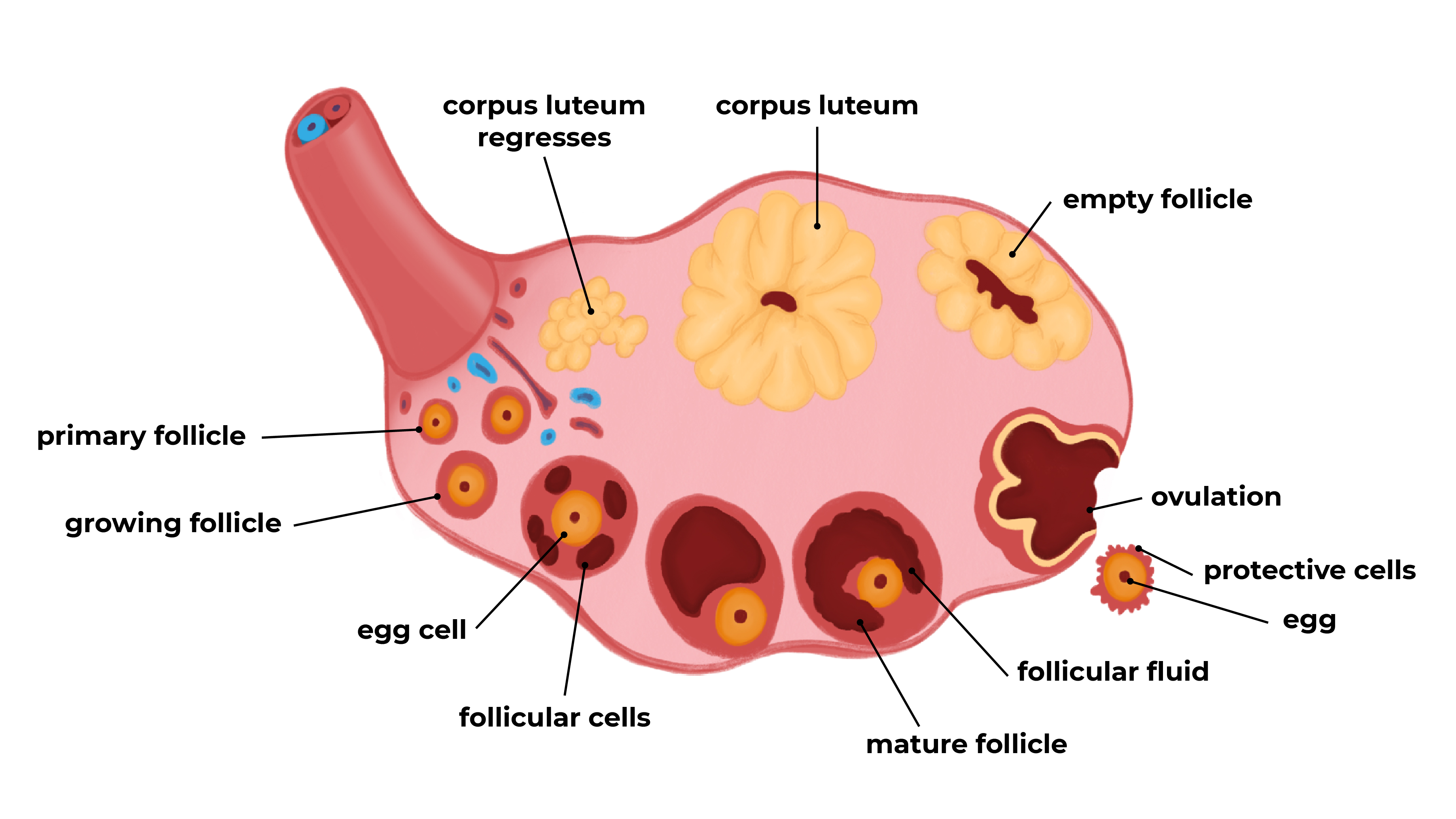
- Follicle-Stimulating Hormone (FSH) – this is produced by the pituitary gland and it stimulates the ova to mature in the follicle.
- Luteinising hormone (LH) – makes the follicle burst and release the ovum.
- Oestrogen – makes the animal show the signs of heat.
- Progesterone – blocks FSH and stops the animal ovulating, if an ovum (egg) is fertilized then the progesterone level will stay high throughout pregnancy.
- Prostaglandins – if the egg is not fertilized then the uterus will produce prostaglandins and the cycle will be repeated.
Copulation
Copulation is the sexually mating of two organisms of the opposite sex. It is the union of two different sex organs.

Fertilisation
Fertilisation occurs after copulation, it is the fusion of the two gametes.
After the male ejaculates, many sperm travel up through the vagina through the cervix. Then to the uterus to meet the ova.

Implantation
This is when the ova joins onto the wall of the uterus. It is by adhesion that the fetus receives nutrients and oxygen for growth.

Gestation
This is the pregnancy stage. For sheep the average length for gestation is 147 days, but for cows it is on average 275 days. This can differ depending on the breeds involved. The earlier maturing breeds tend to have a shorter pregnancy than the late maturing breeds. Multiple births tend to have a shorter gestation.
In the first 30 days of gestation, it is recommended that working the livestock, pronounced changes in feeding practices and vaccination is avoided.
Parturition or Birth
This is known as the birthing period. There are three stages to parturition in cows and sheep and pigs:
- Stage 1 - dilation of the cervix
- Stage 2 - expulsion of the foetus
- Stage 3 - expulsion of the placenta
These all can vary in time scale but generally stage one will last for between 3 to 4 hours, the birth will happen within an hour or less from the rupture of the first water bag.
Conclusion
At the end of this session you should be able to:
- Describe the male and female reproductive anatomy of the cow and sheep.
- Explain the role of the key organs in reproduction.
- Name and explain the role that the reproductive hormones carry out.
- State the sequence in the reproductive cycle of farm animals.